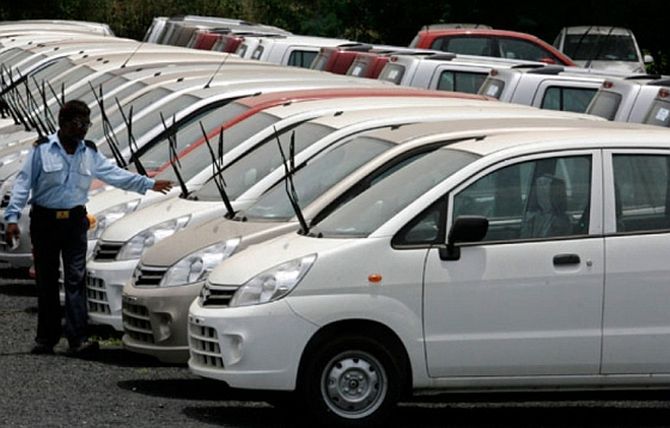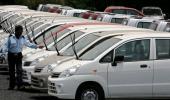Passenger vehicle wholesales in India slipped to a 10-year low in the April-December this fiscal, and the industry will have to work hard to regain better volumes and business health, industry body SIAM said on Thursday.

While releasing the wholesale numbers for December and the third quarter (October-December) of the current fiscal, the industry body said high levels of uncertainty remain in the industry due to Covid-19 situation and shortage of critical components like semiconductors.
SIAM noted that sales improvement in December and the third quarter did not convey the actual picture of the auto industry, which continues to face severe headwinds.
As per the latest data by Society of Indian Automobile Manufacturers (SIAM), domestic passenger vehicle (PV) wholesales increased 13.59 per cent to 2,52,998 units last month as compared with 2,22,728 in December 2019.
Similarly, in the October-December quarter this fiscal, PV sales rose 14.44 per cent to 8,97,908 units from 7,84,616 in the year-ago period.
"If we look at absolute numbers from April-December 2020, some clear highlights emerge. We are at a seven-year low in the two-wheeler segment, 10-year low in the PV segment. Similarly, we are behind ten years in the commercial vehicle segment.
"In the three-wheeler segment, we are behind 20 years. This means the auto industry will have to work hard to regain better volumes and business health," SIAM President Kenichi Ayukawa told reporters in a virtual press conference.
He noted that 2019-20 fiscal was a year of big de-growth for the auto industry, so using it as a base to calculate percentage growth for the current fiscal year would be misleading.
"The sales growth we saw during the third quarter of the current fiscal contains some of the pent up demand from the first quarter, so standalone sales performance of the third quarter may not be a true reflection of the industry's overall sales," he said.
Instead, cumulative sales from April to December 2020 period would better reflect the market pulse, Akukawa added.
In the April-December period of the current fiscal, PV sales declined by 16.06 per cent to 17,77,874 units as compared to 21,17,920 units in the same period of 2019-20. Similarly, two-wheeler sales declined by 22.63 per cent, commercial vehicles by 37.23 per cent and three-wheelers 74.25 per cent as against the April-December period of 2019-20.
On sales outlook, Ayukawa said while the industry expected 2021 to be better than 2020, it remained tough to predict the future with COVID-19 pandemic still there.
"At the same time, the industry is facing a shortage of semiconductors steel and other materials. These may lead to supply and production disruptions at the OEMs. There is also an impact of the price increase of steel, logistics and other raw materials. In such kind of fluctuations, it is very difficult to predict the demand scenario going ahead," he noted.
Ayukawa noted that initiatives such as the announcement of the PLI scheme, low-interest rates, targeted spending in rural areas and continued focus on building road infrastructure, will help in the industry's recovery process.
On the Budget wish-list, Akukawa said they have sought introduction of the scrappage policy.
"We have not sought GST reduction, but if they do it on their own we will appreciate that," he added.
Ayukawa said the industry body has been following the government orders on safety and other regulations, and on making airbags mandatory for front passengers they have told the authorities that it would require some time in order to make preparations.
As per SIAM, motorcycle sales increased 6.65 per cent to 7,44,237 units as against 6,97,819 in December 2019, while scooter sales were also up 5.59 at 3,23,696 units from 3,06,550 units a year ago.
Two-wheeler sales during the December quarter rose 13.37 per cent to 47,82,110 units as compared to 42,18,157 in the same period a year earlier.
However, commercial vehicle sales saw a dip of 1.12 per cent to 1,93,034 units in the quarter under review against 1,95,211 in October-December 2019.
Vehicle sales across categories during the third quarter rose year-on-year by 10.61 per cent to 59,44,991 units from 53,74,680 units.
Ayukawa said passenger vehicle and two-wheeler segments in the third quarter have shown some recovery, while commercial vehicle and three-wheeler segments were still in the negative zone.










